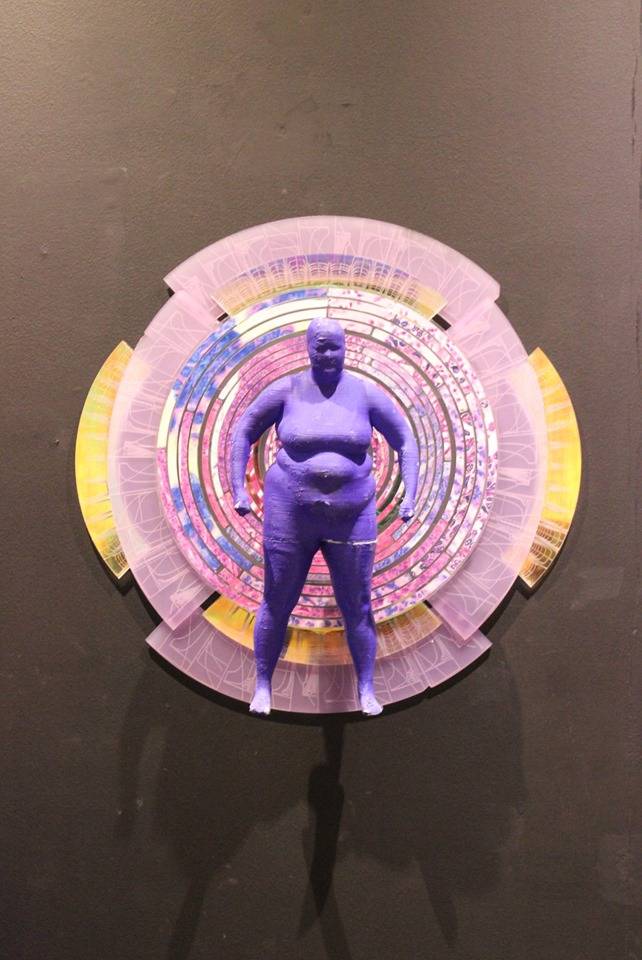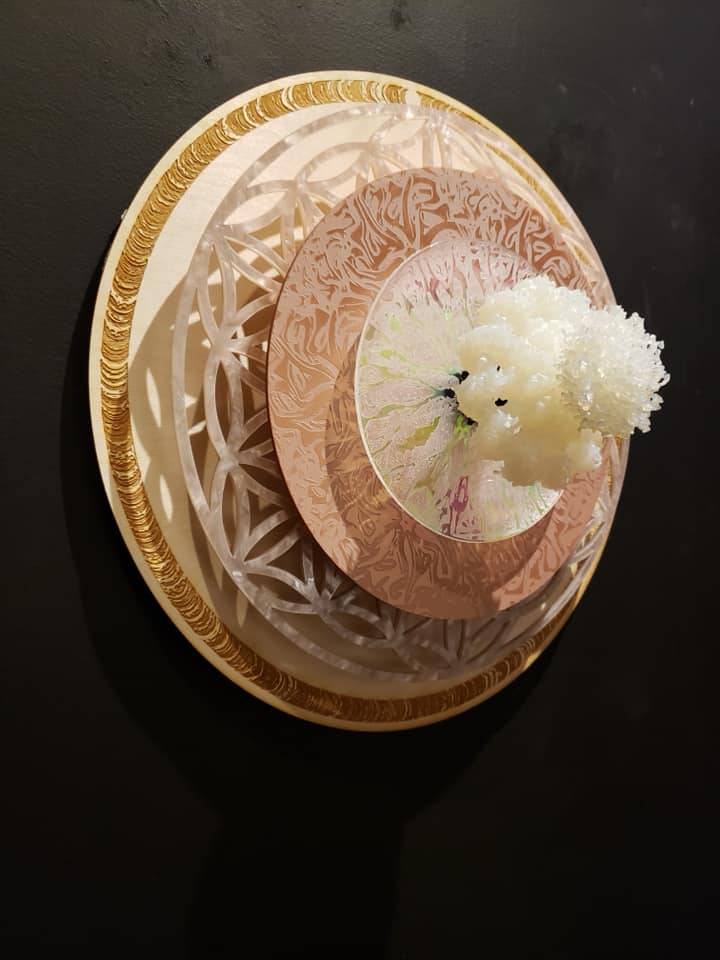The Art of Science: Gallery Showcases Cancer, Bacteria Designs by LSU BE Senior
November 12, 2019
 BATON ROUGE, LA – The art of LSU Biological Engineering senior Meagan Moore will be
featured as part of “Metis-Muses: Women of Art Through Science” at The Healthcare
Gallery and Spa in Baton Rouge through Jan. 21.
BATON ROUGE, LA – The art of LSU Biological Engineering senior Meagan Moore will be
featured as part of “Metis-Muses: Women of Art Through Science” at The Healthcare
Gallery and Spa in Baton Rouge through Jan. 21.
As a BE student, Moore is known in the college for her design of “Marie,” a 3D-printed, 5-foot-1-inch purple model used for cancer radiation therapy research. The life-size “Marie” will be part of Moore’s art display, along with other pieces inspired by her cancer research. One work, called “Cancer Mandala,” features a smaller model of “Marie” in front of a mandala, a geometric figure representing the universe in Hindu and Buddhist symbolism. “Cancer Mandala” combines data Moore collected from the various particle accelerators used in her research with histological image samples of different types of cancer.
“Mandalas are made by monks to guide practitioners to enlightenment and are often painted, woven, made of sand, and sometimes 3D,” Moore said. “The destruction of the sand mandala is a highly ceremonial process, where the piece is parted out and released back into nature. Similarly, certain cancer treatments literally and metaphorically take a person apart or remove the cellular issues manifesting within the physical form.”
The outermost layers of the mandala include various graphs and functions that are utilized to propagate therapeutic beams and function as part of the “tool box” of a medical physicist. Moving inward, there are a series of concentric circles, based on data collected in Moore’s research, representing the regions of interest that were tested on the full-scale “Marie.” Starting from the outer four rings, the data for the thyroid is parted out, with each circle representing a different machine utilized to collect data and the amount of dose-per-dose gray done at varying field sizes. The innermost rings represent the breast/chest, pacemaker and fetus. The small model of “Marie” at the center was used in the prototyping process to design and build the full-scale model.
Another of Moore’s pieces, “Marine Snow: Diatons, Radiolarians, Dinoflagellates,” features resin and acrylic pieces designed to represent actual marine snow, a continuous lilt of organic material that falls from the upper surface waters of the ocean to the depths where this is little to no sunlight. Moore scanned electron microscopy images of diatoms, dinoflagellates and radiolarians to create this piece, which sits on a backlit box that provides color coding to gallery visitors.
 Her “Apoptosis” piece “seeks to analyze the calculated death that cells can undergo,”
Moore said. The central focus is an apoptosome, which is a large quaternary protein
structure formed in the process of apoptosis, which is cell death. The circular facets
of this mandala are composed of the genetic code of the apoptosome.
Her “Apoptosis” piece “seeks to analyze the calculated death that cells can undergo,”
Moore said. The central focus is an apoptosome, which is a large quaternary protein
structure formed in the process of apoptosis, which is cell death. The circular facets
of this mandala are composed of the genetic code of the apoptosome.
Other pieces by Moore include a Petri dish with images shaped out of bacteria, one of which is a bee called “The Most Important Species on Earth.”
“This piece focuses on bees, which were recently acknowledged to be the most important species on Earth,” Moore said. “I hope this piece will imbue a sense of the importance of ‘bee-ing’ rather than seeming and perhaps an enchanting notion to explore the worlds that make our very world exist.”
Moore credits Claire Luikart, Cathlin Disotell and Mary Miller for helping her with these pieces.
The Healthcare Gallery and Spa is located at 3488 Brentwood Drive, Suite 103. The gallery is open to the public during spa business hours, Monday-Friday, 9 a.m.-5 p.m.
Like us on Facebook (@lsuengineering) or follow us on Twitter and Instagram (@lsuengineering).
###
Contact: Libby Haydel
Communications Specialist
225-578-4840